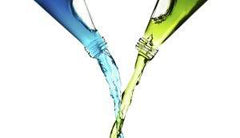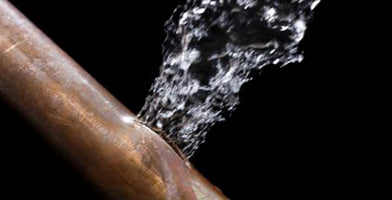If you are looking to add glycol to an existing heat transfer solution, but don't know the makeup of your current fluids, is it ok to add whatever glycol you have on hand?
Or maybe you're interested in switching to a different glycol type than you have used in the past. Do you need to drain and flush the system before switching?
For both of these questions, it is important to note that not all glycols are created equal. There are formulaic differences between propylene glycol and ethylene glycol and even between different brands of the same glycol type.
Due to these differences, mixing propylene glycol and ethylene glycol is highly discouraged. In this article, we will discuss which type of glycol is best for your application and why you should drain and flush your system before adding a new type of glycol.
Which Type of Glycol is Best?
Glycol is used in heat transfer solutions to provide protection against freezing temperatures and corrosion. Both propylene glycol and ethylene glycol do a great job of providing these protections. The answer to our question of "which is best" lies in understanding your application and determining which solution will best fit the needs of the job. Let's explore the primary differences between propylene glycol and ethylene glycol.
The primary difference between propylene glycol and ethylene glycol are the toxicity and heat transfer characteristics.
Propylene glycol fluids are often selected because of their low acute oral toxicity vs. the moderate acute oral toxicity of ethylene glycols. However there is a tradeoff between lower oral toxicity and heat transfer efficiency: ethylene glycol has a lower viscosity than propylene glycol. This means its transport properties outperform propylene glycol at lower temperatures.
In summary, where oral toxicity is a concern, choose propylene glycol for your application. It will provide you heat transfer with protections against freezing temperatures and corrosion.
However, if oral toxicity is not a concern, ethylene glycol is the industry standard. It provides excellent heat transfer, freeze protection and corrosion resistance.
Why Can't I Mix Propylene Glycol and Ethylene Glycol?
Ethylene and propylene glycol have different fluid, toxicity and heat transfer characteristics that will prevent your system from operating correctly when mixed. If you require a food grade propylene fluid, mixing ethylene glycol will create a hazard that requires a complete drain, clean and flush before refilling with correct glycol fluid.
Also, because of the formulaic differences, when you mix two different types or brands of glycol, you reduce the corrosion resistance and interfere with the solutions concentration, which can leave you vulnerable to freezing temperatures.
Finally, mixing can often lead to problems with the system and the glycol itself. Mixing can lead to separation, which can then cause a gel to form that will block filters and strainers, causing damage to the system.
For these reasons, many brands will void their warranty if solutions are found to have been mixed, including Dow.
So if you know you'd like to change up your glycol, here's how to do so safely.
How to I Change Out My System Fluids Safely?
Here the steps to take when switching glycol types or brands:
- Drain and dispose of the old glycol. Click here to read our guidelines for proper glycol disposal.
- After you drain and dispose of the old glycol, you should to flush out your system. Deionized water is recommended when flushing a system, because impurities in dilution water can increase metal corrosion, aggravate pitting of cast iron and steel, cause formation of scale and other deposits on heat transfer surfaces, and cause clogging of system components. Let it run for a little bit to make sure the whole system is cleaned out, and then drain the system.
- By now your system should be cleaned of the old glycol and time to pump in the new glycol. We recommend purchasing your glycol pre-mixed with deionized water, instead of attempting to mix the 100% glycol and DI water onsite. Blending on site is labor intensive and requires someone strong in math and fractions, and precise with measuring fluids. You will also need some place to mix this large volume of fluids, which can be a huge challenge. Premixing is necessary to ensure that the concentration percentages are appropriate for your system to function properly. Go Glycol Pros offers custom premixing to your specifications for no additional cost and will deliver straight to your door. It doesn't get easier than that.
If you have additional questions, contact us today! Our heat transfer experts are ready to help find the right solution for your needs.









